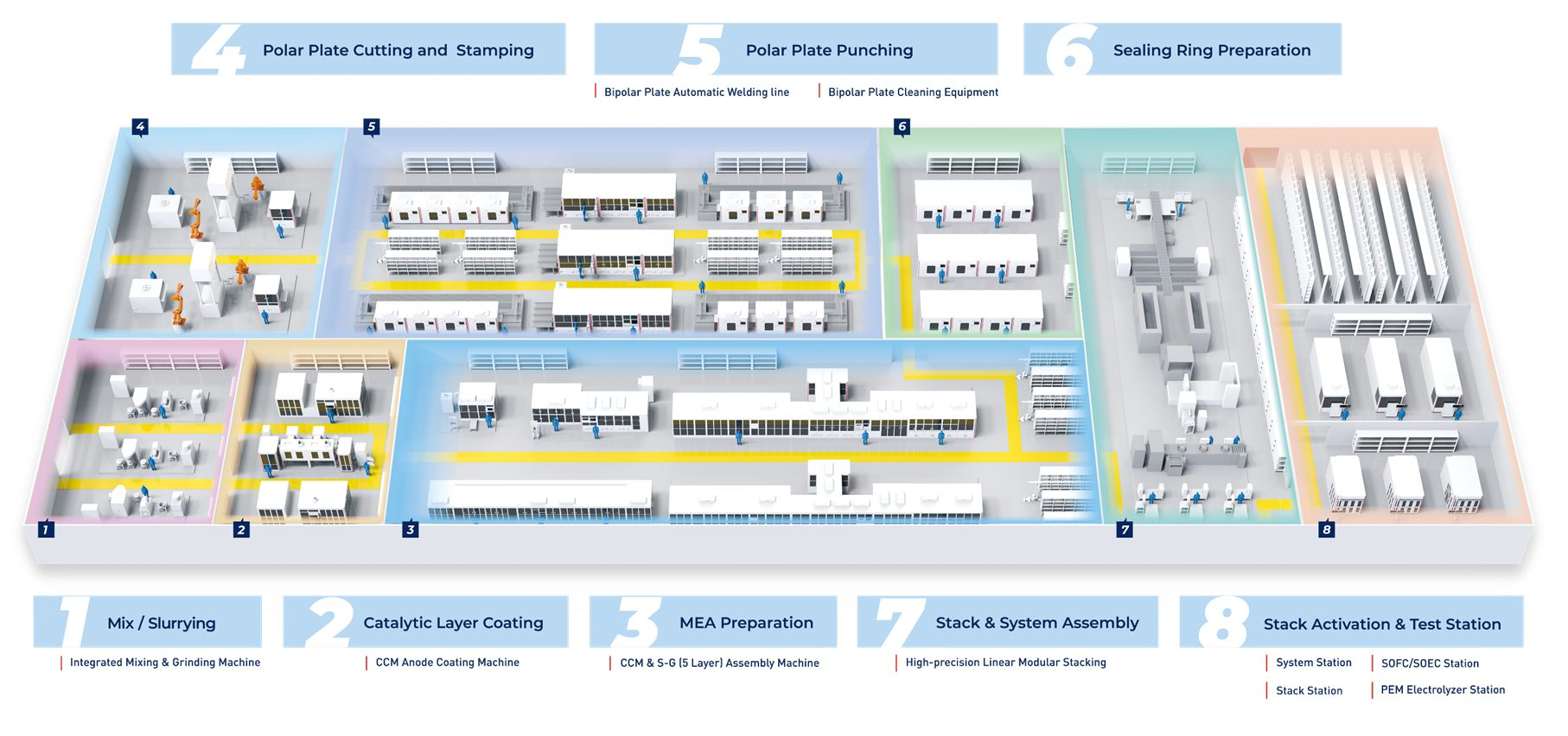The race for clean energy has placed hydrogen fuel cell manufacturing squarely in the spotlight. While the environmental benefits are clear, scaling production efficiently and cost-effectively remains a critical hurdle. The key to unlocking this potential lies not just in the chemistry but in revolutionizing the operations behind it. Advanced automation and smart operational strategies are emerging as the game-changers.
Embracing High Automation & Flexible Compatibility
Modern hydrogen fuel cell manufacturing demands more than just robotic arms. It requires highly automated systems capable of handling diverse product designs—from stacks to full systems – without costly line changeovers. Solutions like LEAD‘s integrated automation platforms provide this essential multi-product compatibility. LEAD’s technology ensures seamless transitions between different fuel cell configurations, maximizing line utilization and future-proofing investments. This flexibility is crucial in a rapidly evolving market.
Mitigating Risk: Smart Inventory & Line Continuity
Unexpected downtime – whether from equipment failure, material shortages, or shipment delays – is the enemy of profitable hydrogen fuel cell manufacturing. The answer lies in intelligent inventory management synchronized with production planning. LEAD’s operational control systems incorporate predictive analytics and real-time monitoring. This allows manufacturers to set dynamic, optimized inventory levels for critical components, significantly reducing the risk of costly line stoppages and ensuring continuous throughput.
Driving Down Costs: Labor, Space & Efficiency Gains
Automation’s core advantages shine brightly here. Implementing sophisticated material handling and assembly automation directly reduces reliance on manual labor, especially for repetitive or complex tasks. Furthermore, optimized layouts enabled by solutions like LEAD’s compact, high-throughput systems drastically improve factory floor space utilization. The combined effect is a powerful reduction in operational costs (labor, overhead) and a significant boost in overall manufacturing efficiency per square foot.
Streamlining the Entire Material Journey
Fragmentation across multiple vendors for material handling (incoming, storage, WIP movement and outgoing) introduces complexity and risk. True efficiency requires an integrated approach. LEAD specializes in providing end-to-end material operation solutions. By managing the entire flow – from raw material intake through to finished product dispatch – within a unified automated system, LEAD eliminates the inefficiencies and potential errors inherent in multi-manufacturer docking. This seamless flow minimizes handling, reduces damage risk, and accelerates cycle times.
Conclusion
The future of hydrogen fuel cell manufacturing hinges on operational excellence as much as technological breakthroughs. By prioritizing high automation, intelligent inventory control, space and labor optimization, and full integrated material handling – championed by innovators like LEAD – manufacturers can achieve the scale, reliability, and cost targets needed to make clean hydrogen power a widespread reality.

